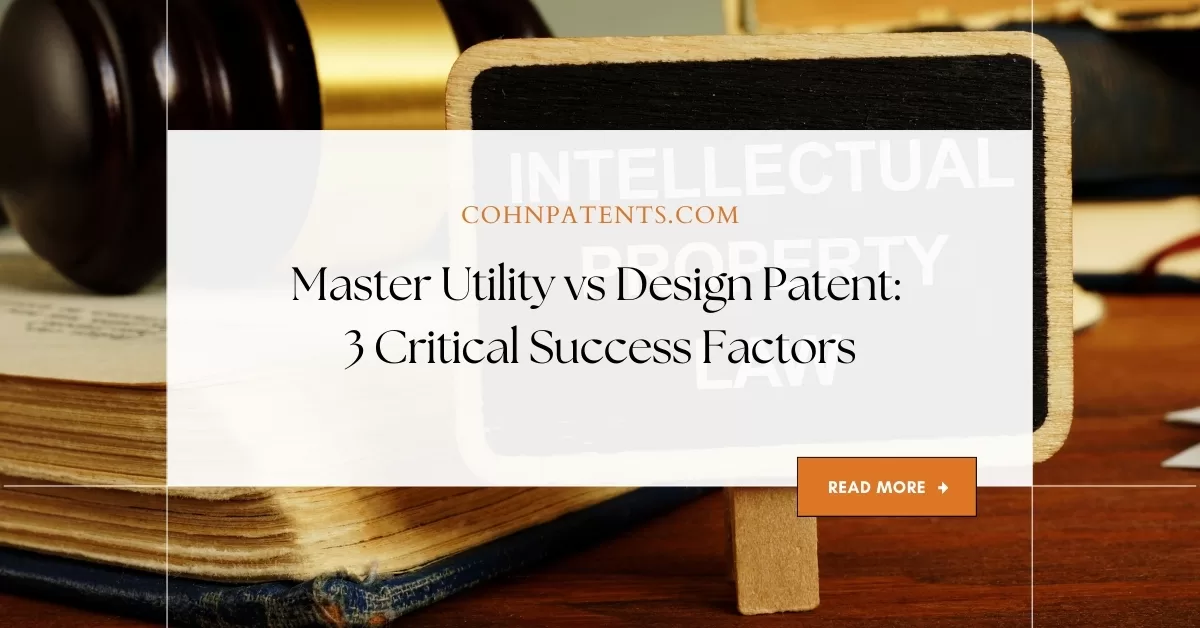Explore Utility vs Design Patent differences.
Discover 3 key factors for optimal protection and consult legal experts.
Why you should protect the design and use of your invention?
When patenting your invention there are quite a few nuances, both technical and logistical, that must be taken into account. The first consideration is how to best protect your idea. Is your invention, design-focused or utility-focused? Depending on what precisely it is that you’re protecting, you will need either need to obtain a Design Patent or a Utility Patent. Read on to see what type of patent is right for you.
What is a Design Patent?
A Design Patent protects the aesthetics of your product. It does not protect the operation or use of your product. A Design Patent is best used when the look of your product is unique from similar products of its type. It is less commonly applied for than a utility patent. It’s cheaper than a utility patent and has a more expedient application process. However, it is much easier for a competitor to design a similar product protected by a design patent because the functions and variations of the product are not protected.
What is a Utility Patent
A Utility Patent is the most common type of patent filed with the USPTO (the United States Patent and Trademark Office). A Utility Patent protects the functions of your invention. The patent protection afforded a utility patent makes it difficult for a competitor to avoid infringement. However, a utility patent is more expensive than a design patent and has a much longer application process, typically about 2 to 3 years.
Should I Register for a Utility and Design Patent?
As previously mentioned, a Design Patent can only protect the ornamental design of your product. Every product has functional and design properties. A utility patent covers the function but not the design. A product can, however, be protected by both a design and a utility patent if both the design and function are new. That’s why it’s important to know the difference.
If you conclude that the difference of protection between a utility patent and a design patent are equally important then you should apply for both. Keep in mind, registering for both a utility and a design patent is difficult, and if you have decided to do this it is recommended that first, you consult a Patent attorney.
What are the Fees when Registering for a Utility and Design Patent?
For a Design Patent, the cost to file the Design patent application is a government filing fee between $240 for a micro entity and $960 for a large entity. Once your Design patent application has been approved by the patent examiner you must pay a Government Issue fee. The Issue fee can range from $250 if you are a micro entity to $1000 for a large entity. For a Utility patent, there is a Government filing fee between $1720 for a large entity and $430 for a micro entity. For Design patent there is an Attorney fee to prepare and file the Design patent application which is typically about $2500.
For a Utility Patent, there is an Attorney fee to prepare and file the Utility patent application which is typically between about $5000 and $10,000. Remember, obtaining registration of both a utility and design patent is not necessarily, a requirement. To recap, while a design patent is a more convenient and expedient option it does not protect the use or operation of your invention. Conversely, a utility patent is the most common type of patent filed with the USPTO and provides your invention with greater protections.
However, utility patents are typically more expensive and require a longer and more complicated process for the application to be granted. Of course, if you decide to register both a Design Patent and a Utility Patent to account for the broadest scope of IP protection, all the better. Still not sure which one is right for you? We’re here to help.
Contact your Patent Attorney to learn more.


